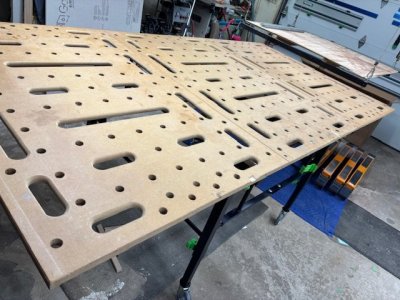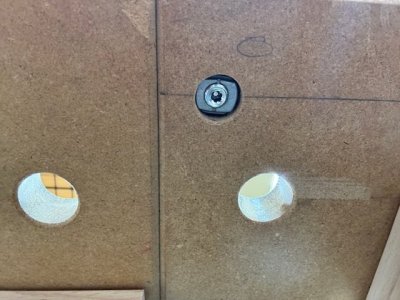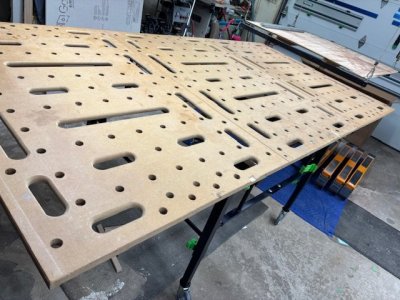Mike Goetzke
Member
- Joined
- Jul 12, 2008
- Messages
- 1,169
I'll be 69 in a half a month but I'm as excited with receiving my STM1800 as I was when I was a kid at Christmas time!
After assembling it I had to time my setup and tear down time compared to my saw horses, 3-MFT style slabs, and track tubes. They took 5 minutes each way and this STM 1800 cut the time by more than half. Plus I can easily glide this 4'x8' table all around my garage shop - something the fixed saw horses couldn't do (and the main reason I purchased the STM).
My three slabs are aligned with a domino and two connectors between each section. On my old system I used two short dogs that fastened to the top rail of the track tubes to hold the slabs in place. Should be easy to find a way to anchor the tops on the STM 1800.



After assembling it I had to time my setup and tear down time compared to my saw horses, 3-MFT style slabs, and track tubes. They took 5 minutes each way and this STM 1800 cut the time by more than half. Plus I can easily glide this 4'x8' table all around my garage shop - something the fixed saw horses couldn't do (and the main reason I purchased the STM).
My three slabs are aligned with a domino and two connectors between each section. On my old system I used two short dogs that fastened to the top rail of the track tubes to hold the slabs in place. Should be easy to find a way to anchor the tops on the STM 1800.



